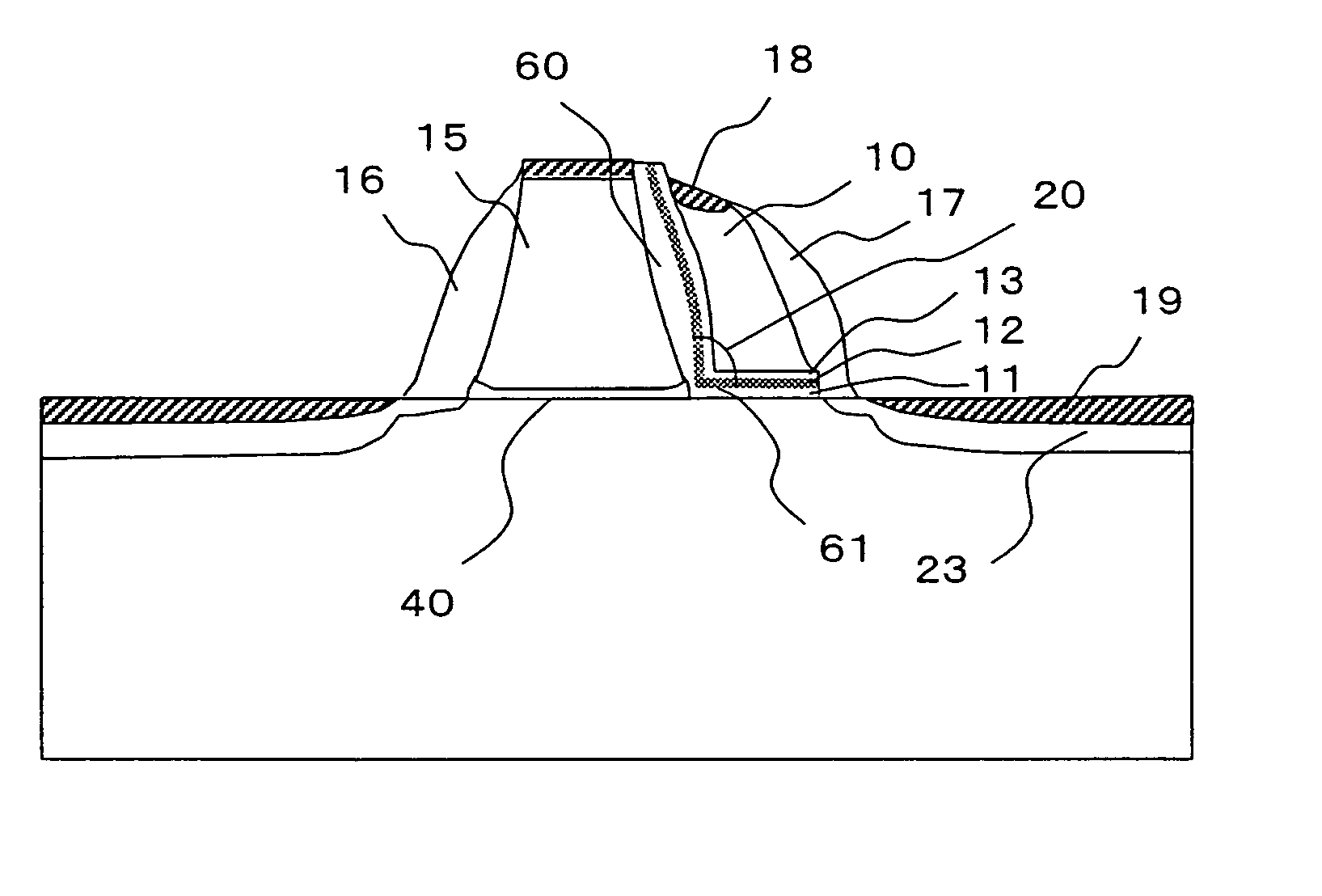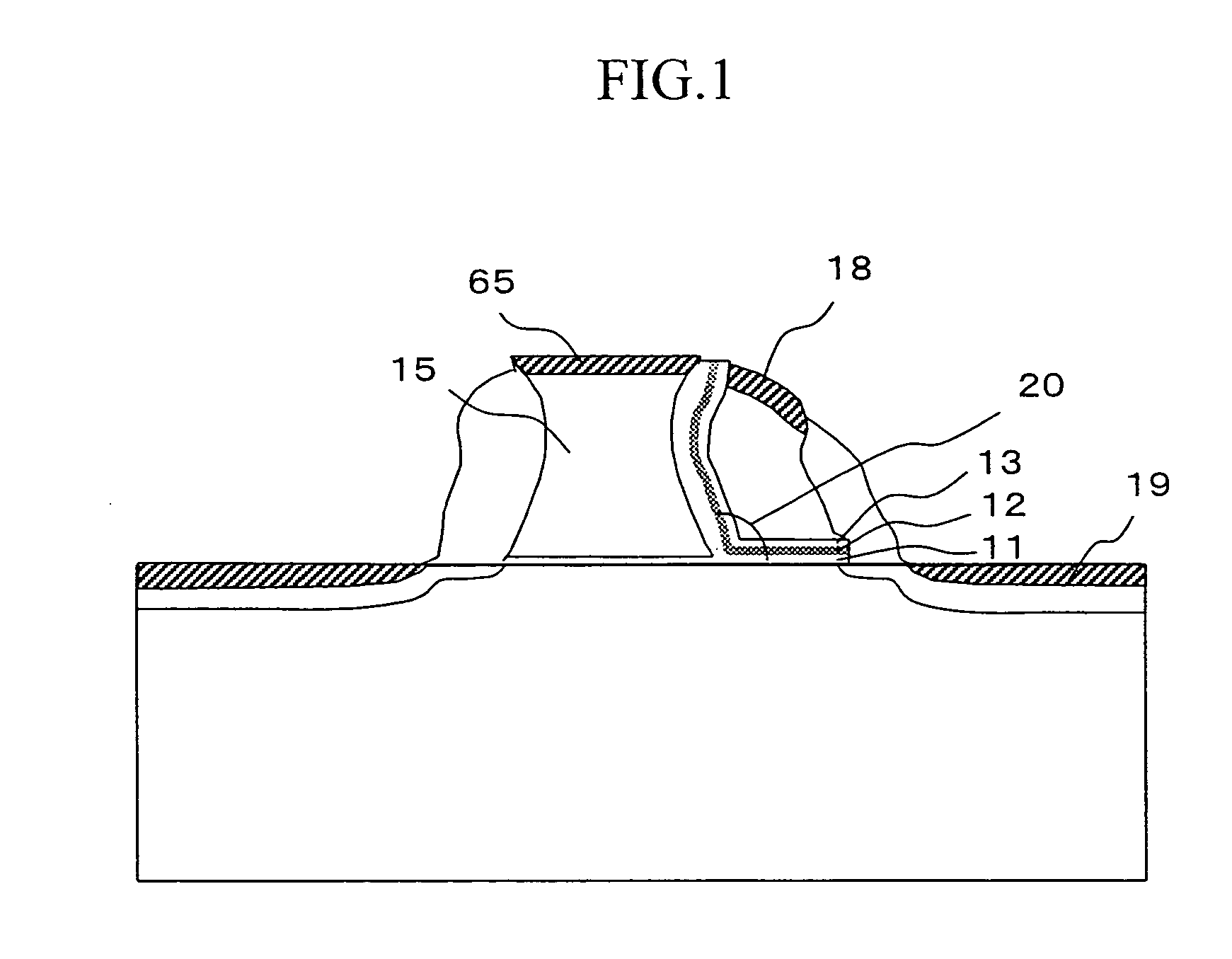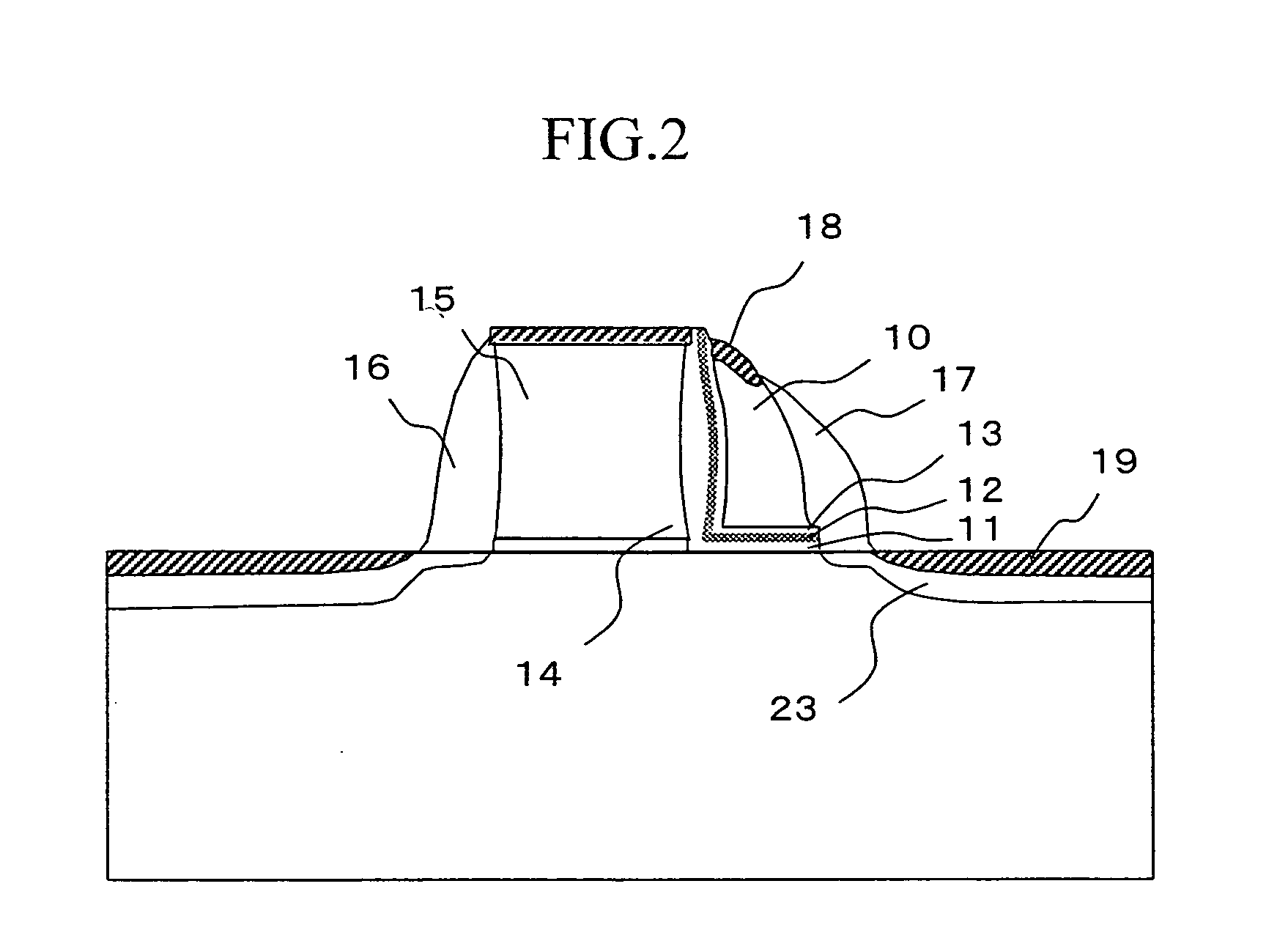Nonvolatile semiconductor memory device with tapered sidewall gate and method of manufacturing the same
a semiconductor memory and sidewall gate technology, applied in semiconductor devices, electrical devices, transistors, etc., can solve the problems of short circuit, insufficient isolation distance from the high-concentration diffusion layer, and increase the thickness of the gate insulator, so as to improve the charge storing characteristic, improve the size, and increase the current
- Summary
- Abstract
- Description
- Claims
- Application Information
AI Technical Summary
Benefits of technology
Problems solved by technology
Method used
Image
Examples
first embodiment
[0049] (First Embodiment)
[0050] Hereinafter, a manufacturing process of a memory cell will be described. FIGS. 6 to 16 are enlarged sectional views vertical to the word line of the memory cell and correspond to a sectional view taken along the line (A)-(B) in FIG. 5. The general shallow trench isolation 33 which electrically isolates the devices is formed in the direction vertical to the word line, and a gate oxide film 40 is formed after the sacrificial oxidation of the surface of a silicon substrate for improving the interface quality (FIG. 6). Subsequently, polysilicon 41 with a thickness of 250 nm to be a material of the select gate electrode is deposited by the CVD, and a cap oxide film 42 with a thickness of 50 nm to be a mask in the subsequent process is deposited by the CVD. After coating a photoresist, the photoresist is patterned with a width of 180 nm by the photolithography process, and the cap oxide film 42 is removed by the dry etching with using the photoresist as a m...
second embodiment
[0053] (Second Embodiment)
[0054] Next, a second embodiment of the present invention will be described with reference to FIG. 4. In this embodiment, the manufacturing method in which the sidewall of the select gate electrode is recessed so as to stably perform the silicide process of the gate electrode will be described.
[0055] The description which overlaps with that of the first embodiment will be appropriately omitted. The process equal to that of the first embodiment shown in an explanatory diagram of FIG. 6 is performed. Subsequently, a polysilicon film and a silicon oxide film are deposited in the same manner, and the silicon oxide film and the polysilicon film are removed by the dry etching with using a photoresist patterned by the photolithography as a mask, whereby the select gate electrode is formed. In this process, the dry etching of the polysilicon sidewall is performed under the condition that the isotropic component is increased. By so doing, the sidewall is recessed a...
third embodiment
[0062] (Third Embodiment)
[0063] In this embodiment, the case where a step (convex portion) is provided between the select gate electrode and the self-aligned electrode so as to surely prevent the short-circuit in the silicide process will be described.
[0064] Since the process until the select gate electrode and the ONO film are formed is identical to that in the second embodiment, the description thereof will be omitted. Subsequently, a polysilicon film doped with an impurity to be the self-aligned electrode is deposited. The deposition thickness of the polysilicon film determines the gate length of the self-aligned electrode. The thickness is preferably within the range of 50 to 120 nm, and a polysilicon film with a thickness of 70 nm is deposited in this embodiment. When this polysilicon film is etched back by the anisotropic etching to form the self-aligned electrode, the over etching amount is increased to provide the step. It is preferable that the over etching of 20 to 80 nm ...
PUM
 Login to View More
Login to View More Abstract
Description
Claims
Application Information
 Login to View More
Login to View More - R&D
- Intellectual Property
- Life Sciences
- Materials
- Tech Scout
- Unparalleled Data Quality
- Higher Quality Content
- 60% Fewer Hallucinations
Browse by: Latest US Patents, China's latest patents, Technical Efficacy Thesaurus, Application Domain, Technology Topic, Popular Technical Reports.
© 2025 PatSnap. All rights reserved.Legal|Privacy policy|Modern Slavery Act Transparency Statement|Sitemap|About US| Contact US: help@patsnap.com



